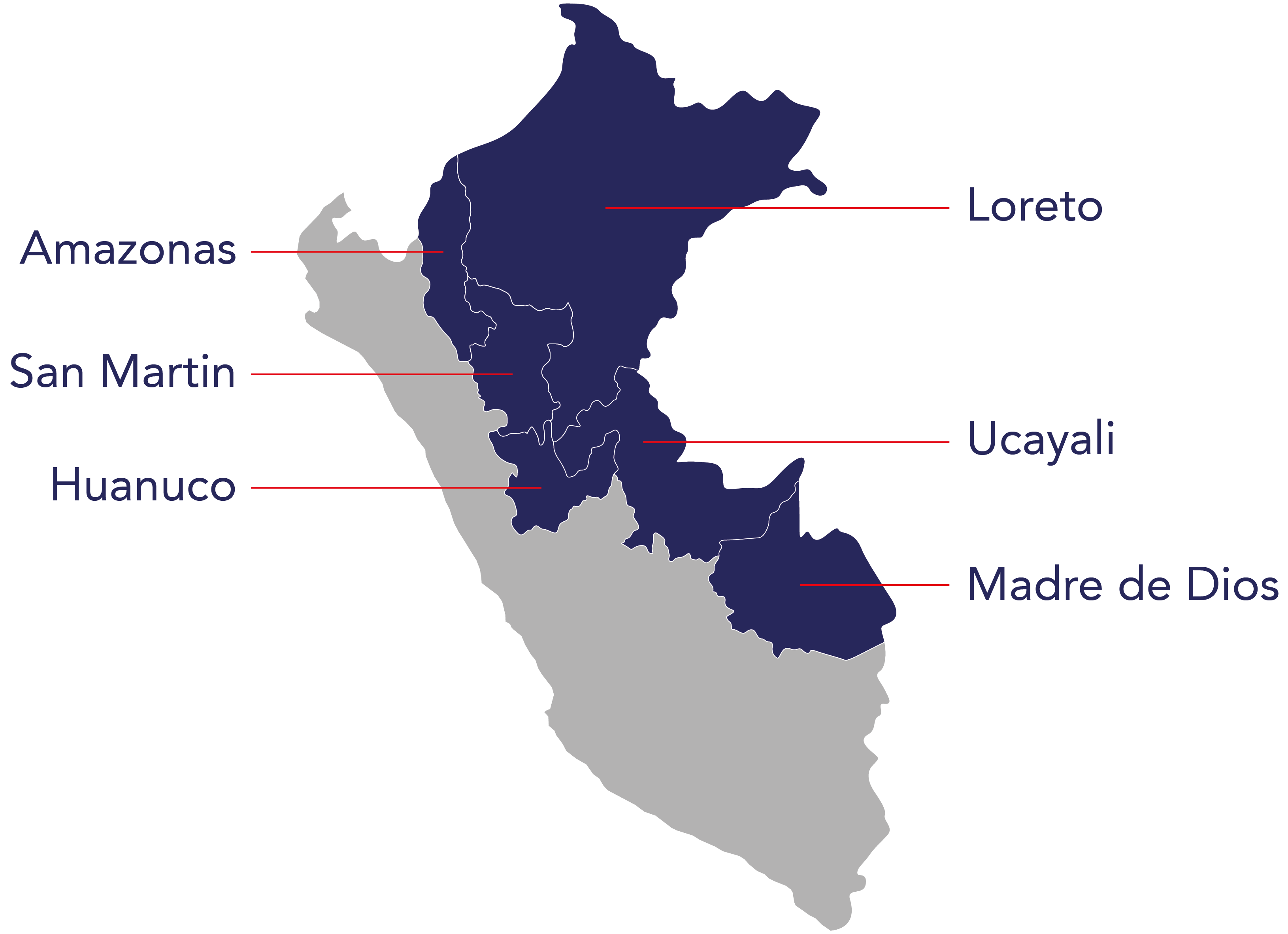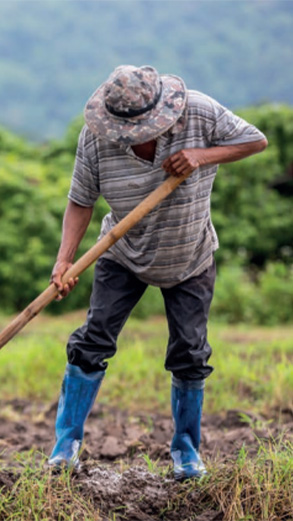Countries:
Peru
Status:
Completed
Sector:
Nature
The project aimed to strengthen the capacity of regional Amazonian governments to implement their low-emission rural development (LED-R) strategies.
The project addressed a complex problem; slowing deforestation while increasing the competitiveness of agricultural products and social inclusion in rural areas in the Peruvian Amazon.
Each year, at least 150,000 hectares of tropical forest are lost in Peru due to deforestation. This is driven by complex mechanisms of direct and indirect causes, such as agriculture expansion, insecure land tenure, soil depletion, illegal gold mining, expansion of plantations and pasture, and other social, economic, and biophysical factors. This loss of forest cover produces extensive greenhouse gas (GHG) emissions, biodiversity loss, and the depletion of local resources and livelihoods – undermining a green economic recovery from the COVID pandemic.
To address this challenge, regional government members of the Amazon Regional Commonwealth, responsible for leading development in more than 55% of Peru’s national territory, have designed low-emission rural development strategies (LED-R). These outline pathways to reduce deforestation, increase competitiveness, and improve social inclusion. The project aimed to secure the approval of these strategies, while strengthening the capacity of subnational governments for effective policy development and implementation. This supported the design of public investment portfolios and enabled the creation of a harmonised interregional LED-R agenda for the Peruvian Amazon.
The project also excelled in delivering gender equality and social inclusion aspects, convening focus groups and workshops with representatives of women’s groups and leaders directly and indirectly linked to nature-based solutions (NBS).
This project was delivered by Earth Innovation Institute (EII) in partnership with Solidaridad.
“Thanks to the project, we will be able to contribute positively as either a regional or municipal government, to implement low-emission rural development strategies and financing actions to reduce deforestation and forest degradation.”
Luis Briceno Jara
Director, Amazonian Regional Commonwealth
“We have improved our capacities to face the challenge of generating development and improving the quality of life of the rural population of our region, considering sustainability and biodiversity conservation.”
William Babilonia
Loreto Regional Government

covering over 85% of the Peruvian Amazon with roadmaps to reduce deforestation
by the Amazon Regional Commonwealth, adopted by the six Amazon regional governors, and endorsed at the national level
through securing public resources for three investment projects and public incentive proposals designed with regional governments and guidelines to include safeguards against deforestation
helped to build capacity across the Amazonian Commonwealth on public policy implementation and LED-R
The project successfully produced three main outputs to support the LED-R agenda across Peru and the wider region:
These outputs were delivered in conjunction with capacity building on implementation and LED-R in collaboration with the Pontifical Catholic University of Peru (PUCP). The training course was attended by over 150 officials from the six regions and was recognised as an official postgraduate course.
with rural women leaders at the start of project implementation to ensure their participation
to explore their experiences around deforestation, and the roles they could play in reducing it
Recommendations were provided to improve the LED-R strategies governance to include views from rural women
GESI was embedded into the training course design
The project identified rural women as a key disadvantaged group as part of their initial GESI assessment. Throughout the delivery of their outputs, the project supported this group, and some key actions taken include:

The project provides the context for the implementation of policies and programmes that seek to promote forest and biodiversity conservation, increase the competitiveness of deforestation-free agriculture, and reduce the inclusion gaps that limit the full development of disadvantaged groups in the rural areas of the Peruvian Amazon. Some key recommendations include:
The strategy that was developed and shared with Loreto to support their low emission rural development.
View PDFUK PACT (Partnering for Accelerated Climate Transitions) is a unique capacity-building programme. Jointly governed and funded by the UK Government’s Foreign, Commonwealth and Development Office (FCDO) and the Department for Energy Security and Net Zero (DESNZ) through the UK's International Climate Finance, it works in partnership with countries with high emissions reduction potential to support them to implement and increase their ambitions for tackling climate change.
© Copyright 2025 UK PACT Privacy Notice Cookie Policy